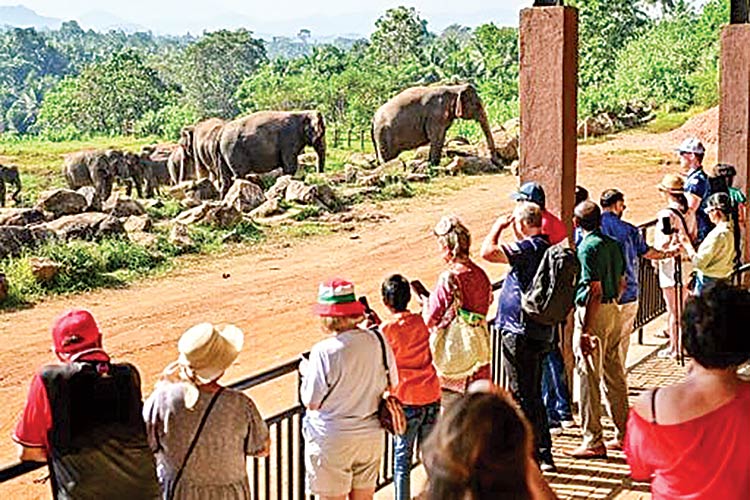Life style
Politics is still dominated by men in Sri Lanka
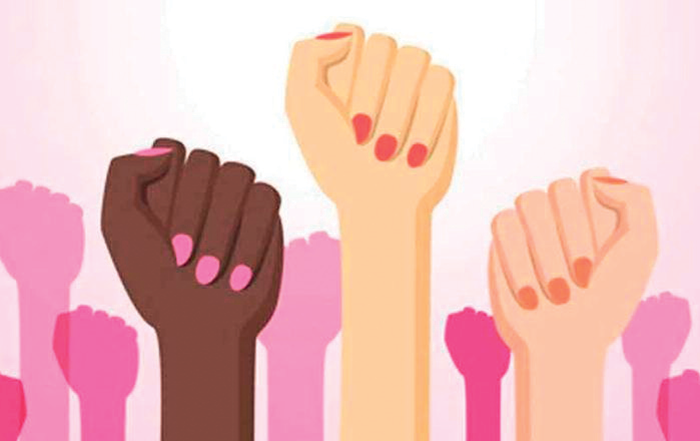
By Zanita Careem
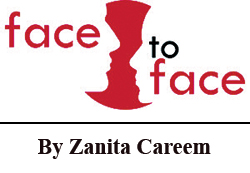 Women in Sri Lankan politics have come a long way, but they still face many challenges. From early pioneers who broke barriers to modern leaders making strides, the journey has been both inspiring and difficult. Despite laws and policies aimed at promoting gender equality, societal norms and structural issues continues to hinder women’s full participation in politics. Although Sri Lanka elected the world’s first female PM in 1960, over six decades later, the country’s political arena continues to be male dominated. Women represent over 52% of the country’s population yet men continue to play a dominant role, in the national legislature while globally there is increased legislators and diversity in politics, Sri Lanka too needs to welcome more women in leadership and political spaces to break political bias. This is the only way to ensure inclusivity, equality and genuine democracy.
Women in Sri Lankan politics have come a long way, but they still face many challenges. From early pioneers who broke barriers to modern leaders making strides, the journey has been both inspiring and difficult. Despite laws and policies aimed at promoting gender equality, societal norms and structural issues continues to hinder women’s full participation in politics. Although Sri Lanka elected the world’s first female PM in 1960, over six decades later, the country’s political arena continues to be male dominated. Women represent over 52% of the country’s population yet men continue to play a dominant role, in the national legislature while globally there is increased legislators and diversity in politics, Sri Lanka too needs to welcome more women in leadership and political spaces to break political bias. This is the only way to ensure inclusivity, equality and genuine democracy.
In an interview with Dr. Deepika Udagama, Sri Lanka Professor of Law at the University of Peradeniya, she said women in politics are essential for representative governance. However while global statistics for female representation in governments worldwide continues to improve, equal participation of women in Sri Lanka is still a far fetched goal. Here are excerpts of the interview.
We received the right to vote in 1931, gave the world its first woman PM. Sri Lanka still remains hopelessly behind in terms of equal representation of women in politics both local and at national level? Your opinion
First, let’s recognize that women’s political representation is essential not just as an end but as a means to an end. Women’s increased participation in politics is required for women to be heard at various policy-making levels so that their issues and concerns and lived realities are factored into decision-making.
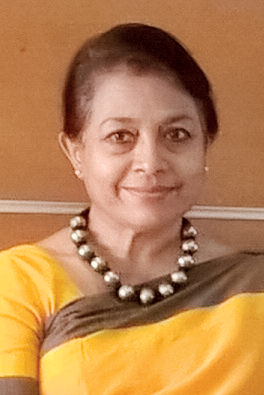
Dr.Deepika Udagama, Professor of Law at University of Peradeniya. She served previously as the Chairperson of the Human Rights Commission
It is encouraging to observe a surge in the number of women elected to parliament at the recent General Election. My understanding is that 21 women have been elected to Parliament (19 from NPP and 02 from SJB), and there may be a few more named in the National Lists. However, the numbers are still very insignificant given that women constitute nearly 52% of the national population and form the bulk of the voters. One could also observe the large numbers of women enthusiastically participating in election rallies in recent months. Who can forget the dynamic role played by women in the Aragalaya? However, it appears that women are eventually counted on for their votes, not so much for the contribution they can make as political representatives to national development.
It’s no secret that there wasn’t a single female candidate at the recent Presidential Election as well. We also know that there have been very few women parliamentarians appointed as cabinet ministers in the past. Despite the recent increase in the number of elected women MPs, the current cabinet too has only two women, including the Prime Minister. It is very disappointing to note that there isn’t a single woman among the Deputy Ministers.
It is also observed that, women cabinet ministers in Sri Lanka have yet to be assigned portfolios that are conventionally considered to be ‘important’ such as finance, defense and foreign affairs although our South Asian neighbors have made those advances. I do believe that after President Kumaratunga this is the first time a female minister is in charge of education. Such marginalization is a travesty, especially in a country which boasts around 92% female literacy and over 60% female students in public universities.
In the past few Parliaments of Sri Lanka, women’s representation hovered around 5.3%. Now it may go up to perhaps 10%-12% depending on the number of women coming in through the national lists of parties. Compare that with the present 33.1% female MPs in Nepal and 20% in Bangladesh. These are Inter-Parliamentary Union data. Of a total of 183 countries ranked as at October, 2024 , Sri Lanka stood at 175. The number 1 ranking was awarded to Rwanda with 63.8% female members of Parliament. Our ranking may go up slightly now, but as I said, in the larger scheme of gender equality in the country even the improved numbers make only an insignificant difference. However, we must build on recent gains and the 25% quota for women’s representation at the local government level introduced in 2016. We must seek quotas for parliament and provincial councils.
Challenges women face especially in the male political culture with deeply rooted social and cultural biases still exists. Do these obstacles for greater representation still persists? Your comments
Yes, of course they do. Public life is still very much a male bastion in Sri Lanka and elsewhere. We understand that gender played a role at the recent US Presidential Election where a sizeable segment of voters believed that they are still not ready for a female president. That’s due to socio-cultural factors. Some countries have, through national conversations on gender equality and with the intervention of inspiring political leaders and proactive civil society, made greater strides than others. African countries such as Rwanda and South Africa are examples.
Turning to Sri Lanka, one primary observation is that the high level of literacy among women has not necessarily translated into improving women’s empowerment in a socio-political sense. It’s almost a given fact that politics is still dominated by men. Even at the level of university student politics women are terribly marginalized. There’s yet to be a female president of a university student union or the IUSF. Patriarchy in the political party system is very much alive and well. Is there a single political party in Sri Lanka presently headed by a woman? A political party of which the General Secretary is a woman?
In contrast, who can forget the dynamic role played by large numbers of women in the Aragalaya? But come election time and party politics, that electrifying gender dynamic has not got translated into the massive shift in women’s political representation one could have reasonably expected. There’s been an improvement of course, but not a radical shift where all or most political parties felt compelled to nominate at least 1/3 of women in their nomination lists. So yes, male domination of politics and political parties is deeply structural brought on by our socio-cultural value base. At a broader level, I believe that educational reforms that focus on personality development and increase our democratic and civic consciousness is a key factor to changing these unacceptable realities aside from advocating for quotas for women in Parliament and Provincial Councils, and yes, in trade unions and student councils etc.
I feel the male model of politics and lack of internal democracy within political parties, may be some of the reasons? Your opinion
Correct. The Conventional model of politics is very male oriented. It is extremely confrontational, reliant on violence (physical, verbal, discriminatory etc.) and massive funding (whether legal or illegal) and encourages patron/client relations. A gentler and cleaner model of politics would certainly encourage female candidates. The past two elections were peaceful and dignified, so there’s future hope.
However, the questionable level of internal party democracy definitely contributes to the challenges women in politics face. Centralized party hierarchies (usually male centric) decide on all important matters including nominations, distribution of election funding, policies, strategies and so on without much consultation with rank and file. If a party does not have a strong women’s wing, women do not have much of a say in the internal decision-making. Any opportunities that come in the way of female members are viewed as concessions, not as entitlements. In Sri Lanka leadership is very personality-based and tends to be monolithic. I have always advocated constitutional or legal regulation of internal party democracy. There must be rules on non-discrimination and inclusivity within parties. How can political parties with authoritarian, non-inclusive hierarchies bring about democracy in a country?
Women make up more than half the voters but not a single women contest for Presidential elections. Financial constraints can be one of the causes for women not to take part in politics. Your opinion?
There are many forms of violence on women, psychological, sexual, physical and economic. Do these obstacles impede political participation?
. Gender equality was mentioned at the conference in Beijing in 1995 Do we follow these highlights and has Sri Lanka taken seriously these clauses? Are there any structural obstacles holding it back?
Women politicians around the world face more or less the same types of challenges, but to varying degrees. Use of violence as a political strategy always discourages women. There was a time in Sri Lanka when any politician who wanted to be ‘successful’ would have to possess a squadron of political goons. A few women became violent politicians, but others just gave up the idea of being active politicians. Hopefully, those are abominations of the past that will no longer be tolerated.
The most potent threat against women in politics is sexual vilification. It is cowardly, but in a conservative society such demeaning tactics work. It breaks the spirit of women. We’ve seen how women parliamentarians participating in debates were vilified by fellow parliamentarians in the recent past. One cannot recall formal action being taken against the miscreants. I note though that the current generation of women politicians is made of tougher metal. They will not give in or be defeated easily. However, the structural dimensions of political parties need a lot of work to achieve gender parity in politics.
Can you mention some of the steps taken by the former governments to rectify the shortcomings, have by any chance women have benefited ?
Introduction of quotas is the main method used to increase female political representation. Quotas can be introduced either at the level of nominations by parties or by reserving seats in elected bodies. The ‘Yahapalanaya’ government introduced a 25% quota for women in local government bodies. India introduced a 1/3 quota for women in the lower house of parliament and state legislative assemblies last year. A few decades ago India introduced a 1/3 quota for women in village councils (Panchayats) that has proved to be very successful. Rwanda which has the highest percentage of women in parliament at present also has adopted quotas. Around 138 countries have adopted gender quotas to increase women’s political representation.
Of course, much more needs to be done than adopt quotas. Civil society and the media should create a strong enabling environment for women to enjoy and advocate rights. Political education of women must reach a point where women actively shame and boycott political parties that marginalize women’s participation. The education system of the country must focus on creating a strong human rights ethos which includes sensitivity to non-discrimination including on the bases of sex and gender. Gender studies must be integrated into all disciplines than being confined to social sciences and humanities. Education must focus on personality development and make extra effort to strengthen women’s life experiences. Overall, the quality of women’s education must improve. Pressure must be put on political parties to create enabling environments that encourage women’s participation in politics including proactive recruitment and nurturing of young women community workers and political activists to take up active politics, political education programs for women and ensuring the inclusion of women in all decision-making bodies of parties.
One hopes that the Speaker and party leaders will create an enabling environment for women MPs to actively contribute to parliamentary affairs and punish any miscreants who belittle them. I do believe that the new women MPs are strong and smart enough to assert themselves and shout down and shame bullies and detractors. The Women’s Parliamentary Caucus should be more active and vocal on women’s issues and encourage more women to join their ranks. Much needs to be done to create a decent society where all have equal opportunities whatever one’s gender.
Life style
Sri Lanka’s first elephant orphanage celebrates 50 years
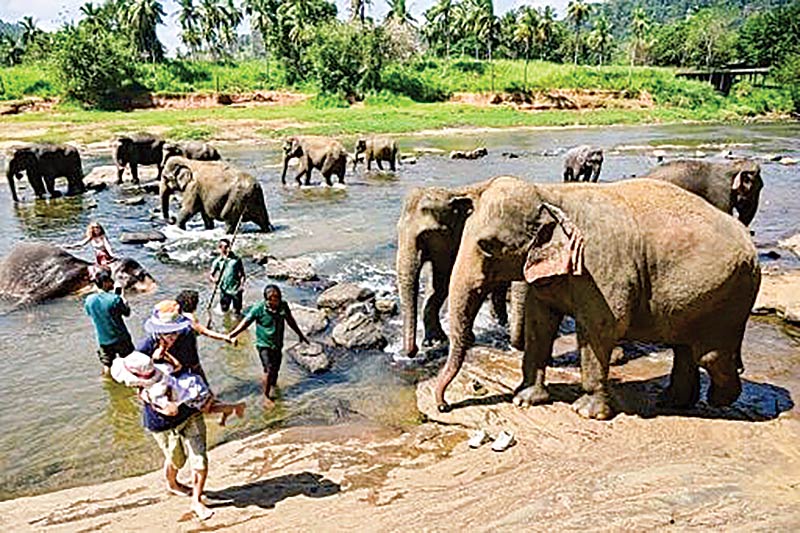
By Amal Jayasinghe
Pics by Ishara Kodikara
Sri Lanka’s main elephant orphanage marked its 50th anniversary on Sunday february 16 with a fruit feast for the 68 jumbos at the showpiece centre, reputedly the world’s first care home for destitute pachyderms. The Pinnawala Elephant Orphanage lavished pineapples, bananas, melons and cucumbers on its residents to celebrate the anniversary of their home, which is a major tourist attraction.
A few officials and tourists invited to the low-key celebration were served milk rice and traditional sweets while four generations of elephants born in captivity frolicked in the nearby Maha Oya river.
“The first birth at this orphanage was in 1984, and since then, there have been a total of 76,” said chief curator Sanjaya Ratnayake, as the elephants returned from their daily river bath.
“This has been a successful breeding programme, and today we have four generations of elephants here, with the youngest 18 months old and the oldest 70 years,” he told AFP.
The orphanage recorded its first twin birth in August 2021 — a rarity among Asian elephants — and both calves are doing well.
Two years before the orphanage was formally established as a government institution in February 1975, five orphaned elephants were cared for at a smaller facility in the southern resort town of Bentota.
“Since the orphanage was set up at Pinnawala in 1975, in a coconut grove, the animals have had more space to roam, with good weather and plenty of food available in the surrounding area,” Ratnayake said.
The home requires 14,500 kilos of coconut and palm tree leaves, along with other foliage, to satisfy the elephants’ voracious appetites.
It also buys tonnes of fruit and milk for the younger calves, who are adored by the foreign and local visitors to the orphanage, located about 90 kilometres (56 miles) east of the capital Colombo.
It is also a major revenue generator for the state, earning millions of dollars a year in entrance fees. Visitors can watch the elephants from a distance or get up close and help scrub them during bath times.
– Tragic toll –
The facility lacked running water and electricity at its inception but things improved as it gained international fame in subsequent years, said retired senior mahout K.G. Sumanabanda, 65.
“I was also fortunate to be present when we had the first birth in captivity,” Sumanabanda told AFP, visiting the home for the jubilee celebrations.
During his career spanning over three decades as a traditional elephant keeper, he trained more than 60 other mahouts and is still consulted by temples and individuals who own domesticated elephants.
Twenty years ago, Sri Lankan authorities opened another elephant home south of the island to care for orphaned, abandoned or injured elephants and later return them back to the wild.
While Pinnawala is seen by many as a success, Sri Lanka is also facing a major human-elephant conflict in areas bordering traditional wildlife sanctuaries.
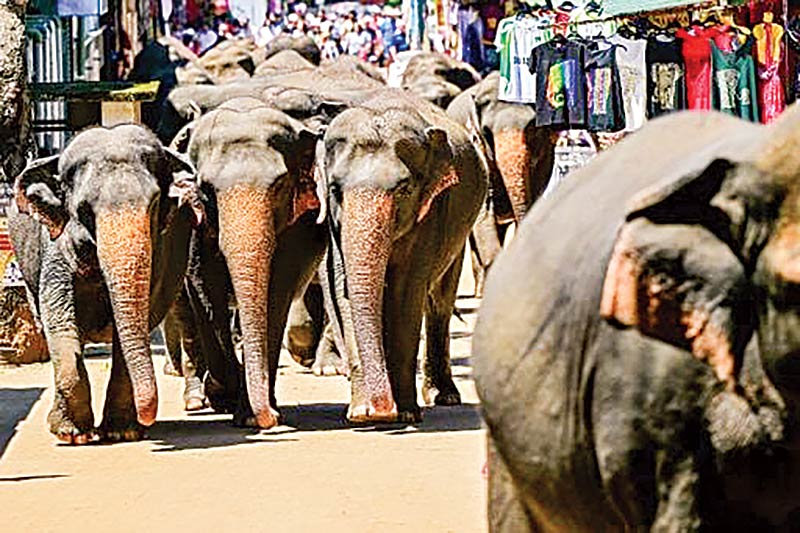
Elephants return to Sri Lanka’s Pinnawala Elephant Orphanage after taking their daily bath in a river
Deputy Minister of Environment Anton Jayakody told AFP on Sunday that 450 elephants and 150 people were killed in clashes in 2023, continuing an alarming trend of fatalities in the human-elephant conflict. The previous year saw 433 elephants and 145 people were killed.
Killing or harming elephants is a criminal offence in Sri Lanka, which has an estimated 7,000 wild elephants and where jumbos are considered a national treasure, partly due to their significance in Buddhist culture.
But the massacre continues as desperate farmers face the brunt of elephants raiding their crops and destroying livelihoods.
The minister was confident the new government could tackle the problem by preventing elephants from crossing into villages.
“We are planning to introduce multiple barriers—these may include electric fences, trenches, or other deterrents—to make it more difficult for wild elephants to stray into villages,” Jayakody told AFP.
Life style
Growing the Cultural Landscape with Suhanya Raffel
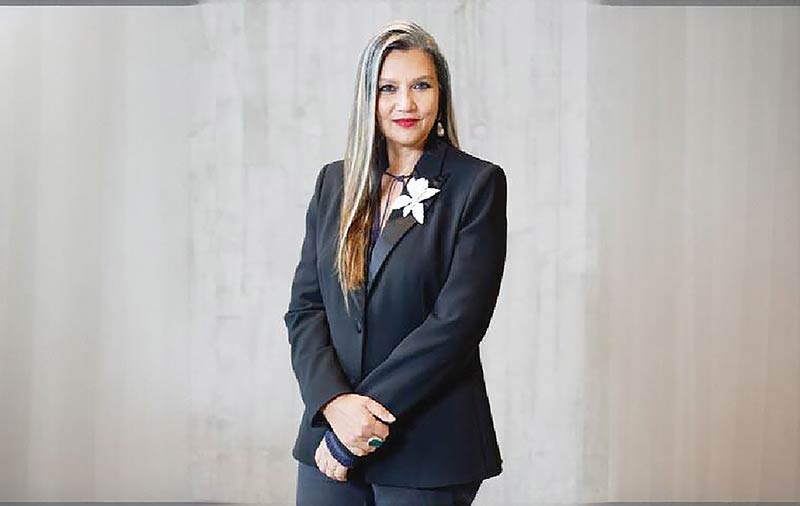
The Geoffrey Bawa Trust which was launched its 2025 is followed by Curatorial Conversations Series. Recently a presentation was made S by M+ Museum director and Geoffrey Bawa Trustee Suhanya Raffel. Speaking at the new Bawa Space on Horton Place, Raffel drew on extensive experience in the museum and art world to present insights and programming from the M+ Museum in Hong Kong. M+ is Asia’s first global museum of contemporary visual culture and presents itself as an intersection of visual art, design and architecture, and the moving image.
The evening presented an opportunity to hear from a leading expert in the museum field and discuss Sri Lanka’s present and future cultural landscape. It also highlighted the role of the Geoffrey Bawa Trust in conserving the legacy of the architect and his collaborators, and promoting contemporary art and design. “There are amazing artists, great designers, and reactive minds in Sri Lanka and the region,” Raffel said at a press event earlier in the afternoon. “There is opportunity in the aspiration to establish things, artists doing very important work, and the energy of individuals to try to make a difference.”
In part, this opportunity stems from the lack of established large-scale infrastructure to conserve Sri Lanka’s modern cultural legacy and support emerging artists. While there is the scope to shape the domestic art world and build institutions reflective of the local cultural community, there are also limitations and challenges in realising this potential.
Raffel spoke extensively about the need to build curatorial skills and knowledge and nurture cultural leaders in the region. Recognising this need, the Geoffrey Bawa Trust maintains public programmes, including exhibitions, residencies, tours, and lectures, to broaden public discourse and knowledge on the built environment and the arts in Sri Lanka and overseas. To fulfil curatorial needs and encourage growth in artistic and cultural institutions such as museums, the Trust employs a dedicated curatorial team and runs a robust internship and training programme. It is hoped that building this skill base will encourage others to explore similar career opportunities and support art, design, and architecture in the region. Sri Lankan visual arts over the past century have enjoyed wide international acclaim. “Sri Lanka is known globally for its creative work,” says Raffel, “it is culturally very strong.”
Geoffrey Bawa is a great example of this global influence. During his lifetime, the architect was very well-known in Sri Lanka and among contemporaries around the world. His structural, landscape, and furniture designs continue to guide and inspire. “It is very important for makers to be seen with their international peers,” Raffel explains. This cultural engagement on regional and international platforms is paramount for ensuring open dialogue and exchange. This means supporting collaborations, encouraging foreign markers to come to Sri Lanka, and exhibiting Sri Lankan work internationally.
The Trust is working to support this global dialogue by hosting installations by artists and makers from Sri Lanka and abroad, as was done in celebration of Geoffrey Bawa’s 100th birthday and again throughout the To Lunuganga programme from 2023-2024. The Trust took Geoffrey Bawa’s work to the world in 2024 with the travelling It is Essential to be There exhibition in Sri Lanka, India, and the United States.
The Trust is proud to be part of major professional international forums such as the International Confederation of Architectural Museums and the Committee for Modern and Contemporary Art Museums, both affiliated with the International Council of Museums. These platforms are vital for global knowledge sharing and advocacy. “We want more of these types of collaborations to happen both with the Geoffrey Bawa Trust, but also other arts and cultural institutions in Sri Lanka,” says Raffel.
In furthering this mission, the Trust is excited to present the new Bawa Space as the organisation’s public face and offer opportunities for the public to engage with the Trust’s work. Located in a recently restored Bawa-designed house from 1959, the Bawa Space doubles as the Geoffrey Bawa Trust headquarters and archives, as well as a new gallery and space for talks and events that will continue year-round.
Life style
Colombo Fashion Week 19-22 February: Two decades of creating the Fashion Eco-system in Sri Lanka

This year CFW will showcase a selection of Emerging Designers alongside established Sri Lankan designers. Adding international flavour will be well known designers from India Suket Dhir, Urvashi Kaur and Zaheer Abbas from Pakistan.
Colombo Fashion Week (CFW), presented by Mastercard, enters its 22nd year in 2025 with its Summer edition, marking another milestone in its journey as one of the four fashion weeks in Asia that have surpassed 2o years.Emerging Designer initiative of CFW this time remains one of its main pillars, providing an entry point for the next generation to pursue design-based entrepreneurship. This in line with the introduction of the Craft Fashion Fund this year is a testament to this commitment. The Craft Fashion Fund will select two winners, one who incorporates batik and another who utilizes crafts other than batik. This initiative passed 20 years.
Over the years, CFW has proven to be the backbone of Sri Lanka’s fashion design industry—its only voice—while creating a fashion ecosystem that provides support to new emerging designers entering the industry. Informally known as South Asian Fashion Week, it serves as a regional hub due to its geopolitical advantage. It is also one of the most significant fashion weeks in South Asia, having played a crucial role in revitalizing the country’s fashion design industry.
This year, Colombo Fashion Week has also expanded its international footprint since joining as a founding member of the newly created BRICS International Fashion Federation. This aligns with CFW’s ongoing mission to bridge diverse fashion markets and foster creative dialogue across continents. As part of this federation, CFW has signed a designer exchange program with BRICS, where a designer from a BRICS country will showcase their work at CFW, and a Sri Lankan designer will present their collection there. CFW continues to play a pivotal role in presenting Sri Lanka through the lenses of arts, culture, and sustainability, further contributing to destination marketing on a global scale.

The Head Table From L to R: Harsha Maduranga, GM – Vision Care, Yatila Wijemanne, Chairman – Juniper, Dr. Vibash Wijeratne, Dirand CEO – Ninewells, Shamara Silva, Mrkt & Media Dir – Unilever, Ruwan Perera, CEO – NDB Wealth, Kamal Munasinghe, Area VP and GM – Cinnamon Grand, Ajai Vir Singh, Founder – CFW, Sandun Hapugoda, Country Mgr – Mastercard, Samrat Datta, GM – Taj Samudra, Bernhard Stefan, MD – Nestlé Lanka, Ramani Fernando, Founder – RF Salons, Arjuna Kumarasinghe, MD -Cargills Food & Beverages
Ajai Vir Singh, Founder, Colombo Fashion Week stated: “Colombo Fashion Week has consistently demonstrated its commitment to developing Sri Lanka’s fashion industry through strategic international partnerships and innovative platforms. Our growing international recognition and expanding designer network reflects vital role this platform plays in positioning Sri Lanka through its creative industries.”
Mastercard, as the presenting partner, continues to champion CFW’s vision of sustainable and inclusive fashion innovation, focusing on digitizing sustainability initiatives and supporting small and medium fashion enterprises.
Sandun Hapugoda, Country Manager, Sri Lanka & Maldives, highlights: “Mastercard is thrilled to partner with Colombo Fashion Week once again, celebrating the incredible talent and creativity within the fashion industry. This partnership aligns perfectly with our commitment to support local artistry. Together, we aim to inspire new possibilities, connect communities, support sustainable fashion initiatives, and elevate the local fashion industry to a global audience, delivering a truly priceless experience. We also anticipate CFW to be a great support to boost the Sri Lanka tourism industry as well.”
The Craft Fashion Fund encourages young designers to engage with and incorporate Sri Lankan crafts into their collections. This approach has been highly successful for designers in other South Asian countries, where traditional crafts have helped establish a unique identity for them. Sri Lankan fashion has its best opportunity to develop a distinct identity when designers integrate local crafts into their work. The developing of this identity has been professed by CFW among the design fraternity, so they are able to create market demand beyond Sri Lanka.
The Emerging Designer initiative of CFW remains one of its main pillars, providing an entry point for the next generation to pursue design-based entrepreneurship. This in line with the introduction of the Craft Fashion Fund this year is a testament to this commitment. The Craft Fashion Fund will select two winners, one who incorporates batik and another who utilizes crafts other than batik. This initiative will support two exceptional designers, ensuring the preservation and evolution of Sri Lanka’s rich artistic heritage. This season, fifteen emerging designers will present their collections, further demonstrating CFW’s dedication to fostering the next generation of fashion talent.
Fazeena Majeed Rajabdeen, Director & CEO, Colombo Fashion Week further added: “Colombo Fashion Week, with its focus on nurturing new talent and emerging designers, has played a pivotal role in reviving and propelling Sri Lanka’s fashion industry. We are proud to present 15 emerging designers this year and to have Sharmila Ruberu mentoring these designers on collection planning. This, along with the Craft Fashion Fund, reiterates our commitment to further the thriving ecosystem we have built, embracing sustainability and empowering young talent.”
Colombo Fashion Week Summer 2025 is set to transform Colombo into an immersive fashion destination by showcasing designers across three of the city’s most prestigious locations. The key partners of Destination Colombo includes Shangri-La, Taj Samudra, and Cinnamon Grand. The shows will feature an impressive roster of international and local talent, including designers from India, Italy and Russia. Renowned creators such as Rimzim Dadu,
Cettina Bucca, Suneet Varma and JJ Valaya, will present alongside celebrated Sri Lankan designers including Fouzul Hameed, Sonali Dharmawardena, Asanka De Mel, Aslam Hussein, Kamil Hewawitharana, Dimuthu Sahabandu, Indi Yapa Abeywardena and Charini Suriyage.
Colombo Fashion Week 2025 is proudly supported by Mastercard, presenting partner along with Shangri-La, Cinnamon Grand, Taj Samudra, NDB Wealth, Yatra, Ninewells Aesthetic Centre, Tresemme, Vaseline, Juniper, Chupa Chups, Nestle-Nescafe, Vision Care, Knuckles, Hameedia, Ramani Fernando, Wijeya Newspapers, Hard Talk, Acorn and Emerging Media.
-
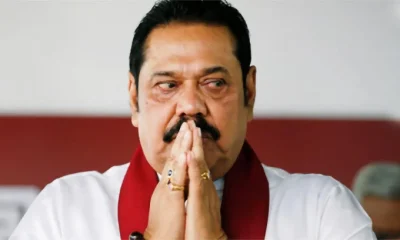
 Features6 days ago
Features6 days agoDon’t betray baiyas who voted you into power for lack of better alternative: a helpful warning to NPP – II
-

 News4 days ago
News4 days agoCommercial High Court orders AASSL to pay Rs 176 mn for unilateral termination of contract
-
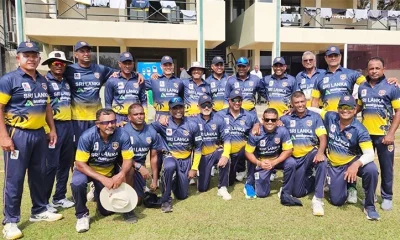
 Sports3 days ago
Sports3 days agoSri Lanka face Australia in Masters World Cup semi-final today
-

 Features6 days ago
Features6 days agoTwo films and comments
-

 Features5 days ago
Features5 days agoUSAID and NGOS under siege
-

 Features5 days ago
Features5 days agoDoing it in the Philippines…
-

 News3 days ago
News3 days agoCourtroom shooting: Police admit serious security lapses
-
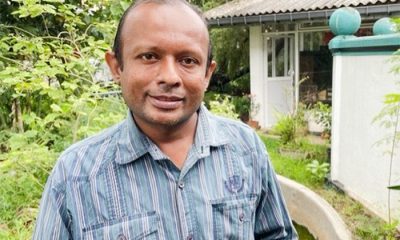
 News4 days ago
News4 days agoFSP lambasts Budget as extension of IMF austerity agenda at the expense of people


